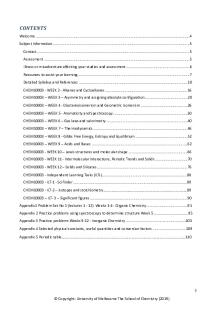Millman\'s theorem - It\'s tutorial work PDF

| Title | Millman\'s theorem - It\'s tutorial work |
|---|---|
| Author | Karuna Elsy Thomas |
| Course | Advanced Physics Practicals |
| Institution | University of Kerala |
| Pages | 6 |
| File Size | 315.9 KB |
| File Type | |
| Total Downloads | 11 |
| Total Views | 125 |
Summary
It's tutorial work...
Description
Millman’s Theorem The Millman’s Theorem states that – when a number of voltage sources (V 1, V2, V3……… Vn) are in parallel having internal resistance (R 1, R2, R3………….Rn) respectively, the arrangement can replace by a single equivalent voltage source V in series with an equivalent series resistance R. In other words; it determines the voltage across the parallel branches of the circuit, which have more than one voltage sources, i.e., reduces the complexity of the electrical circuit. Contents: Explanation of Millman’s Theorem Steps for Solving Millman’s Theorem This Theorem is given by Jacob Millman. The utility of Millman’s Theorem is that the number of parallel voltage sources can be reduced to one equivalent source. It is applicable only to solve the parallel branch with one resistance connected to one voltage source or current source. It is also used in solving network having an unbalanced bridge circuit.
As
per
Millman’s Theorem
Explanation of Millman’s Theorem Assuming a DC network of numerous parallel voltage sources with internal resistances supplying power to a load resistance RL as shown in the figure below
Let
I
represent the resultant current of the parallel current sources while G the equivalent conductance as shown in the figure below
Next, the resulting current source is converted to an equivalent voltage source as
shown
in
the
figure
below
Thus,
Positive (+) and negative (-) sign appeared to include the cases where the sources may not be supplying current in the same direction.
Also,
And as we know, I = V/R, and we can also write R = I/G as G = I/R So
the
equation
can
be
written
as
Where R is the equivalent resistance connected to the equivalent voltage source in series. Thus,
the
final
Steps for Solving Millman’s Theorem
equation
becomes
Following steps are used to solve the network by Millman’s Theorem Step 1 – Obtain the conductance (G1, G2,….) of each voltage source (V1, V2,….). Step 2 – Find the value of equivalent conductance G by removing the load from the network. Step 3 – Now, apply Millman’s Theorem to find the equivalent voltage source V
by the equation shown below Step 4 – Determine the equivalent series resistance (R) with the equivalent
voltage sources (V) by the equation Step 5 – Find the current IL flowing in the circuit across the load resistance
RL by the equation...
Similar Free PDFs

Work-Energy Theorem Tutorial
- 4 Pages

Psych 1x03 - tutorial work
- 1 Pages

CTutorials - tutorial work
- 108 Pages

Tutorial work - Case studies
- 14 Pages

Tutorial work - 12
- 2 Pages

Tutorial 6 work
- 2 Pages

Tutorial work - 1 - 3
- 31 Pages
Popular Institutions
- Tinajero National High School - Annex
- Politeknik Caltex Riau
- Yokohama City University
- SGT University
- University of Al-Qadisiyah
- Divine Word College of Vigan
- Techniek College Rotterdam
- Universidade de Santiago
- Universiti Teknologi MARA Cawangan Johor Kampus Pasir Gudang
- Poltekkes Kemenkes Yogyakarta
- Baguio City National High School
- Colegio san marcos
- preparatoria uno
- Centro de Bachillerato Tecnológico Industrial y de Servicios No. 107
- Dalian Maritime University
- Quang Trung Secondary School
- Colegio Tecnológico en Informática
- Corporación Regional de Educación Superior
- Grupo CEDVA
- Dar Al Uloom University
- Centro de Estudios Preuniversitarios de la Universidad Nacional de Ingeniería
- 上智大学
- Aakash International School, Nuna Majara
- San Felipe Neri Catholic School
- Kang Chiao International School - New Taipei City
- Misamis Occidental National High School
- Institución Educativa Escuela Normal Juan Ladrilleros
- Kolehiyo ng Pantukan
- Batanes State College
- Instituto Continental
- Sekolah Menengah Kejuruan Kesehatan Kaltara (Tarakan)
- Colegio de La Inmaculada Concepcion - Cebu








